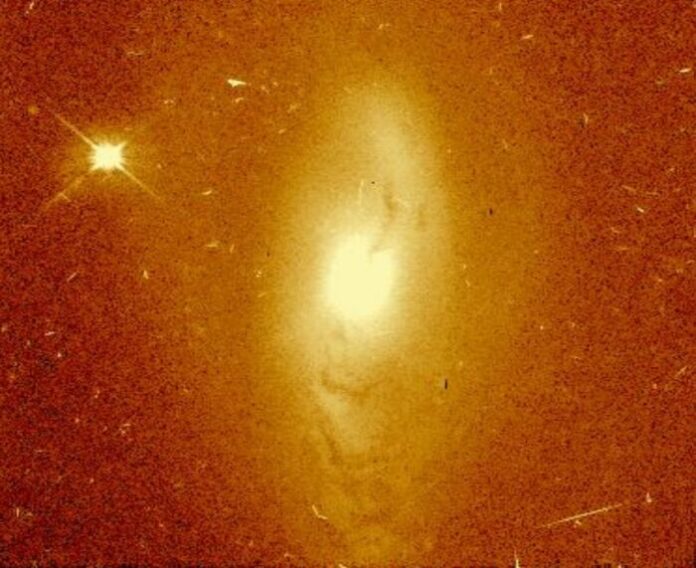
Two black holes, hundreds of millions of times more massive than the Sun, separated by a distance only a thousand times greater than that between the Earth and our star, and linked in an inexorable dance of approach which, after a few hundred thousands of years – or perhaps a few million – will cause them to collide and merge, creating an even more massive body and producing a spike in gravitational waves.
This is the subject of a new discovery, published in The Astrophysical Journal by an all-Italian team led by Roberto Serafinelli, a postdoc Inaf researcher in Milan. The team developed a new technique for examining large samples of galaxies and looking for repeated, or periodic, signals in their X-ray emission, indicating the presence of two supermassive black holes in their nucleus, orbiting each other. other.
“We looked for the periodicity in a sample of 553 active galaxies, of which the Neil Gehrels Swift Observatory had taken data regularly over the past 10 years,” explains Serafinelli, first author of the new article. “One of these galaxies, called Markarian 915, shows a signal that repeats periodically with cycles of about 3 years for about 3 times. Although other candidates have been found in the past, this is the first time that a source with this particular behavior has been observed on X-rays.
Astrophysicists call active galaxies those in which the central black hole is “devouring” the surrounding matter at a remarkable rate, resulting in an accretion disk that produces intense emissions across the electromagnetic spectrum. Although it is only a fraction of all galaxies, it is in these sources that the effects of the black holes at their center can best be analyzed.
Similar studies had been conducted in the past on samples of active galaxies observed in the optical band – the visible light, to which even our eyes are sensitive. About 150 potential pairs of supermassive black holes emerged from these investigations, but the researchers suspect that many of these measurements are actually “false positives”, as such a large number of binary black holes should produce a continuous gravitational wave signal. , to date not observed.
The new method, on the other hand, focuses on observations in the X-band, and in particular in the higher frequencies of this portion of the spectrum, the so-called “hard” X-rays, where the accretion disk signal around the black hole is less subject to absorption and other effects that make it more difficult to measure and interpret. Any periodicity of this signal, with regular maximums and minimums of intensity, such as that found in this work, indicates the presence not of a single accretion disk, but of two mini-discs around each black hole.
The search for “double monsters” like this is the first step in a systematic study of one of the greatest mysteries of modern astrophysics: the evolution of galaxies over the billions of years of our universe’s history, and in particular the process merging – the collision between two galaxies leading to the birth of a new galaxy – as well as the coalescence of supermassive black holes at their center. In the future, the gravitational waves produced by pairs of black holes like these, which are slowly approaching, can be detected by monitoring the arrival times of the pulsar signals, while the final phases of these mergers will be captured by the Lisa (Laser Interferometer) mission. Space Antenna) of the European Space Agency, the first gravitational wave observatory in space, with launch currently scheduled for the decade 2030.
“Understanding the density of binary supermassive black holes in the universe is crucial to understanding how they formed and what their progenitors are,” adds Paola Severgnini, also an INAF researcher in Milan and co-author of the new article. “This will provide very important information on the origin of the first structures of matter formed in the universe and on the evolution of galaxies”.
“Furthermore, these merging processes could also trigger outflow phenomena on galactic scales and subsequently influence the evolution of the new galaxy itself,” explains Valentina Braito, an INAF researcher in Milan and at the Catholic University of America, in the United States.
Researchers await the release of new data to confirm the binary systems discovered so far by studying longer observations, and possibly looking for new ones.



































